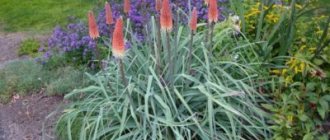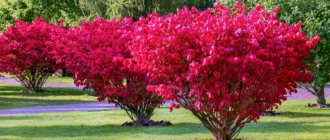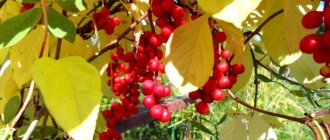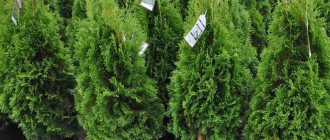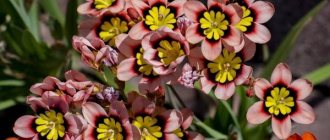Sages are spicy aromatic plants, the essential oils of which are concentrated mainly in green leaves and young shoots. The name of the plant comes from the Latin words salvus - to be healthy, salvare - to save, to protect, since some species have been effectively used in medicine for centuries.
- Oak sage (Salvia nemorosa)
- Glutinous sage (Salvia glutinosa)
- Meadow sage (Salvia pratensis)
- Perennial sages in garden design
- Choosing a place to plant sage
- Caring for perennial sage
- Propagation of perennial sages
Oak sage (Salvia nemorosa)
Also known as forest sage (Salvia sylvestris). It blooms from late June to September, weaker from August, but this problem can be solved by timely removal of faded inflorescences. The leaves are slightly wrinkled, glabrous, decreasing in size from top to bottom. Oak sage has the largest number of varieties among sages. They differ in the color of the inflorescences, the height of the bush and the timing of flowering.
Salvia Caradonna
What does it help with?
The range of exploitation is wide: from superficial lesions, mechanical damage to serious illnesses.
Diseases
Sage-containing products are indicated for:
- diseases of the oral cavity, throat ( toothache , stomatitis, sore throat);
- problems with the gastrointestinal tract (ulcers, gastritis );
- diseases of the respiratory system ( bronchitis , pneumonia);
- cold;
- hemorrhoids;
- initial stage of diabetes mellitus;
- skin rashes (dermatitis, acne, psoriasis);
- cuts, frostbite, burns;
- reduced immunity;
- chronic fatigue;
- menopause;
- infertility.
For a severe cough, a glass of milk boiled for five minutes with a teaspoon of herbs will help. The slightly cooled drink is drunk in small sips at a time.
Weight loss
Due to several properties, sage is recommended for losing excess weight. It dulls the feeling of hunger, while simultaneously charging you with energy, removes toxins, blocks free radicals, speeds up metabolism, regulates bowel movements, relieves flatulence, and helps reduce cellulite.
The dried or fresh plant is used to season dietary foods and smoothies. But a more noticeable result will come from drinking the decoction in the course (no longer than 3 months in a row).
To do this, pour a tablespoon of dry collection or a handful of fresh leaves with a glass (250 ml) of clean water and heat for 15 minutes in a water bath. Then leave covered for another 20 minutes and strain. Drink half a glass before main meals. It is allowed to occasionally diversify the drink with a slice of lemon, honey, or a piece of ginger. Before taking a long time , it is advisable to consult a doctor.
Now you know what benefits and sometimes harm Salvia officinalis can bring.
Glutinous sage (Salvia glutinosa)
It deserves our attention due to its very impressive size, late flowering and a rare flower color for sages - pale yellow. Inflorescences up to 30 cm long bloom from late August until late autumn, until frost damages them.
Bushes with numerous stems reach a height of 90 cm, covered with large pubescent leaves on long petioles.
The color of the foliage is also unusual - while most salvias are rich green, this species has yellowish-green, light-colored leaves.
Salvia adhesive
Description
According to Wikipedia, sage ( Latin name - Salvia) is a herbaceous perennial subshrub of the Lamiaceae family. Medicinal species have found recognition in scientific and traditional medicine, cosmetology, cooking, perfumery, and decorative ones - in landscape design.
Other name
In addition to the traditional name, sage is called noble, cross, royal, or, based on Latin, salvia. In everyday speech in different areas you can hear: honey honey, blue letter, kokish, samose, lettuce leaf, salvia. On English-language packaging it is designated as garden (common) sage.
Where and how does it grow
The habitat of wild salvia is the Mediterranean, especially Italy, Serbia, and Albania. The shrub is actively cultivated in the southern steppe regions of Russia, in the territories of Slovakia, the Czech Republic, France, Greece, Moldova, and Ukraine.
The crops are heat-loving, drought-resistant, but defenseless against frost. They reproduce by dividing the bush or by seeds. If planted in spring, the first harvest can be harvested from the end of August.
What does it look like
The average height of a sage semi-bush is 70-75 cm. The rhizome is densely branched, the stem is bare woody below, herbaceous above, the leaves are green with a grayish tint, elliptical, petiolate or sessile, the inflorescences are spike-shaped, the flowers are usually light lilac, lilac-blue or blue.
photo
salvia flower photos
Chemical composition
Salvia is valued for its content:
- vitamins (A, group B, C, E, K, PP);
- essential oil containing cineole, thujone, borneol, and other terpenes;
- flavonoids (plant polyphenols that activate enzymes);
- bitterness;
- phytoncides;
- tannins;
- organic acids (ursolic, oleanolic, chlorogenic);
- micro-, macroelements (potassium, calcium, sodium, magnesium, iron).
There is a species of sage that causes a hallucinogenic state. The ancient Gauls used it in rituals of communicating with spirits.
What smells
The plant itself does not emit a strong aroma. But if you rub the leaves between your fingers, a sharp, specific smell . Reminds me of something between lavender and tobacco with a hint of camphor.
Benefit and danger
Salvia has a whole range of beneficial effects:
- antimicrobial;
- anti-inflammatory;
- antiseptic;
- astringent;
- expectorant;
- hemostatic;
- diuretic;
- calming;
- restorative.
It is used to treat diseases of the gastrointestinal tract, respiratory system, colds, and to combat gynecological and reproductive problems. Read more about the positive effects on the human body in the following sections.
Among the many varieties, there are toxic plants . Therefore, if you lack experience and knowledge, you should refrain from independently procuring raw materials in order to avoid possible poisoning.
Meadow sage (Salvia pratensis)
It has very long loose branching purple-blue inflorescences up to 40–50 cm, the height of the bush is 50–80 cm. It blooms for a long time - from mid-June to late autumn. From the second half of July, flowering weakens a little, but in September a new wave begins.
Meadow sage
Flowerbed care
Red perennial salvia (photos of flowers of different varieties amazes with their diversity and color range) will bloom profusely and luxuriantly only if favorable conditions are created for it. Despite the unpretentiousness of the flower, it is still necessary to provide it with regular watering, air humidity and temperature conditions. Without these important factors, the plant will simply die.
Spraying, watering
Seedlings and already mature plants need systematic watering; this condition allows the root system to actively develop, produce new shoots and lush flowering. The seedlings are watered using a spray bottle, which will prevent possible damage to thin, fragile stems.
Instead of a sprayer, you can use a tray with water in which to place a container with sprouts. Water will flow evenly and gradually to the roots through the drainage holes. Adult bushes are watered when the top layer dries 1.5-2 cm, it is advisable to do this in the evening.
Watering frequency is approximately 1-2 times a week. There is no need to spray an adult salvia, however, during the dry period this procedure will not be superfluous, but will only improve the well-being of the flower.
Top dressing
For salvia, fertilizing is very important, they help the plant to grow stronger and take root faster, and for adult bushes to obtain abundant, bright and lush flowering, in addition, fertilizers contribute to the growth of green mass on the bushes.
The first fertilizing is required immediately after planting the plants in an open area. The second is during the budding period of the bushes, and the subsequent ones are performed regularly at equal intervals (approximately once every 2 weeks).
Perennial red salvia needs complex mineral supplements, trying to avoid an excessive dose of nitrogen, since this substance promotes the growth of greenery, but stops the formation of inflorescences.
Photos of flowers in a flower bed, which are regularly fertilized with mineral and organic mixtures, prove the need for this procedure. Meanwhile, organics and mineral supplements should be alternated. Leaf compost, chicken droppings, manure, and eggshells are good organic fertilizers.
Transfer
The plant requires replanting only when seedlings are being grown. Salvia seedlings are transplanted from containers into open ground using the transshipment method, which will keep the root system intact and young flowers will take root faster.
In the future, replanting is performed as necessary, for example, to create the correct flower arrangement, or to provide the plant with appropriate lighting. Since salvia is a heat-loving plant, bushes should be replanted only in sunny, windless weather.
Trimming, tying, pinching
Perennial bushes of decorative flowering sage require pruning. This procedure allows you to stop the growth of the bush in height and the exposure of the stems from foliage. Pruning allows the plant to bush and produce new side shoots.
After flowering, it is necessary to remove dried flowers and cut off flower stalks.
The bush is completely pruned before wintering. The stems are cut so that a few branches with renewal buds remain. After pruning, the bush is mulched with fresh compost, especially in the shoot areas. After this, the trimmed plant is sprinkled with dry leaves, which will insulate the rhizome and replenish the soil with nutrients.
Pinching is carried out on young seedlings after they have formed 4 true leaves. The top 2 leaves are pinched. The procedure allows the plant to bush in the future.
Temperature and humidity
Salvia is a heat-loving flowering plant that grows well in areas with sufficient light and sunlight. However, direct sunlight can harm the bushes and cause burns on the foliage and stems, so choose a place with diffused sunlight.
The optimal temperature for long and abundant blooming is 23-27° C, the optimal air humidity is 50%. If there is insufficient humidity, it is recommended to place trays with water near the flowers.
Perennial bushes, as a rule, are frost-resistant; they can withstand frosts down to -30° C. That is why there is no need to dig up bushes for the winter or cover them. Loosening the soil is also very important for the plant. Regular such procedures allow you to saturate the rhizome with oxygen and stop the growth of weeds near the bush.
Perennial sages in garden design
Thanks to their unique appearance and unusual blue-violet palette in the color of the inflorescences, perennial sages will add a unique flavor to any corner of the garden. Sages are used to create bright spots on the lawn and go well with plants of contrasting colors, for example, yellow or white - with irises, clematis, echinaceas, lilies. Sages will become worthy companions for a rose, emphasizing its beauty and standing out against its background with the blue of its flowers.
Varieties and species of different heights can be used in a mixborder, giants (sticky sage, oak sage Amethyst ) placed in the background, and plants of medium height closer to the front edge of the flower garden. Miniature varieties (oak sage Marcus, Sensation Deep Blue Improved, Sensation Deep Rose Improved, Sensation White, Superba ) look great not only in a mixborder, but also in containers that can be buried in the garden for the winter.
Planting sage with yarrow, sedum, poppy, and delphinium is spectacular. Sage can be used to create a wonderful border that will be consistently decorative: all three types do not tend to become exposed at the bottom and fall apart. If there is room in the garden for aromatic herbs, sage will be indispensable there.
Flower garden with sage
Medicinal properties and contraindications
After salvia, both positive and negative dynamics can be observed. Pregnant women, nursing mothers, people with thyroid diseases, hypotensive patients, and epileptics should avoid sage-containing preparations, infusions and other forms. In a healthy person, their excessive consumption causes intoxication, causing nausea, weakness, and migraines. Therefore, it is necessary to adhere to the instructions for use .
More about useful characteristics below.
Sage leaves
Leaves of pharmaceutical varieties:
- restore protective functions;
- relieve insomnia;
- increase resistance to stress;
- stimulate expectoration of sputum;
- improve peristalsis, remove bile;
- relieve influenza intoxication.
Improves immunity
Indications for external use are wounds, burns, frostbite, acne, pharyngeal congestion, baldness.
Traditionally, for the decoction, a mixture of a tablespoon of dried crushed herb and 250 milliliters of clean water is kept in a water bath for 15 minutes. Cool, filter, add boiled water if necessary to restore the original volume of liquid. Store no longer than 12 hours.
Sage herb
In addition to the previous section, honey honey in bloom:
- stabilizes nervous activity;
- increases efficiency and concentration;
- removes toxins, heals the digestive organs;
- stops bleeding.
Helps with constipation and stomach upsets
Rinsing with a decoction reduces inflammation of the gums and relieves toothache.
For men
Beneficial properties of salvia for men's health:
- stimulates testosterone production;
- makes sperm more mobile and viable;
- resists infertility;
- enhances the effect of drugs that stimulate conception;
- supports the functioning of the prostate gland;
- eliminates the effects of stress and overwork;
- increases potency, promotes sexual desire.
Can men drink an infusion of sage leaves on a regular basis? No, continuous use should not exceed a month, then a three-week break should be taken.
For women
Thanks to phytoestrogens, similar in structure to female hormones, salvia:
- stabilizes hormonal levels;
- helps to more easily endure menopausal hot flashes;
- eliminates frigidity;
- reduces the level of irritability, stops mood swings;
- relieves gynecological inflammation;
- increases the likelihood of conception.
Salvia will also help when a nursing mother needs to stop lactation. After individual selection, dosed use of tea, regular or alcoholic infusion, extract, pharmacological tablets.
For children
For children, sage preparations are usually prescribed for damage to the gums, oral mucosa, and sore throat. They have an anti-inflammatory effect, inhibit pathogenic bacteria, and relieve cough. Ingestion, inhalation, and baths are practiced. The latter are acceptable for infants when it is necessary to speed up the healing of the umbilical zone, eliminate prickly heat, diathesis, and normalize the baby’s sleep.
Propagation of perennial sages
The easiest way to propagate perennial sages is by dividing the bush, stem cuttings and layering. It is best to divide the bush in late August - early September. Salvias are propagated by semi-lignified stem cuttings in late June - July.
Cuttings of perennial sage
Cuttings with two or three pairs of leaves, planted in perlite or a mixture of sand or perlite with soil, take root easily. To root a stem layer, a long shoot is pinned to the ground, and after one or two months you can cut off the branch with the formed roots from the mother bush. In the first year, it is recommended to cover young plants with spruce branches for the winter.
Planting salvia
It is difficult to give general recommendations for growing salvia, because this plant has many species that differ so much from each other: some love the sun, others love shade, others love partial shade, some are drought-resistant, others love moist soils, and so on.
But despite this, there are many similarities between the species. So, all cold-resistant salvias feel equally good not only in partial shade, but also in the sun. Heat-loving species, on the contrary, can grow normally only in sunny areas, they are not so demanding on soil moisture and are more drought-resistant, keep this in mind when planting. When planting, place different species as far apart as possible. When choosing a place for planting, remember that all of them, regardless of the species, prefer to grow on light sandy soils, relatively rich in humus. And I almost forgot, salvias very easily cross with each other, which is why they are not suitable for further propagation by seeds. Therefore, try to place different types of salvia as far from each other as possible.


